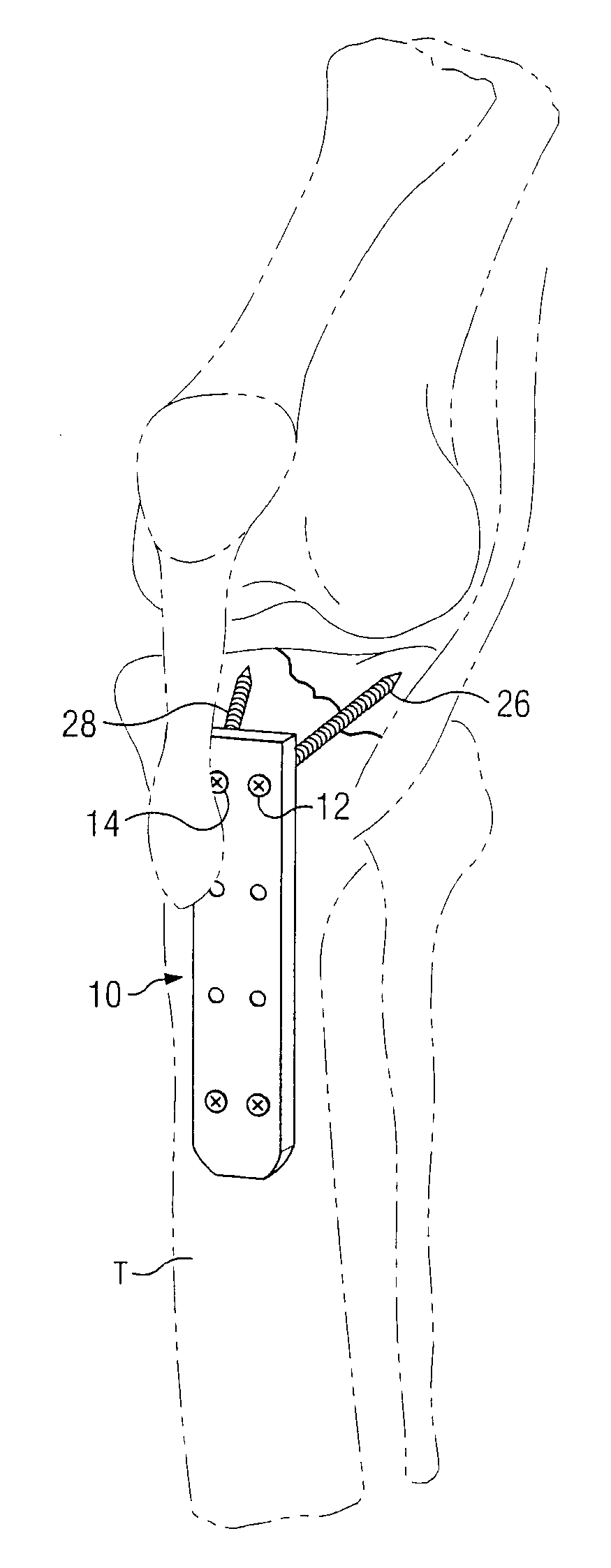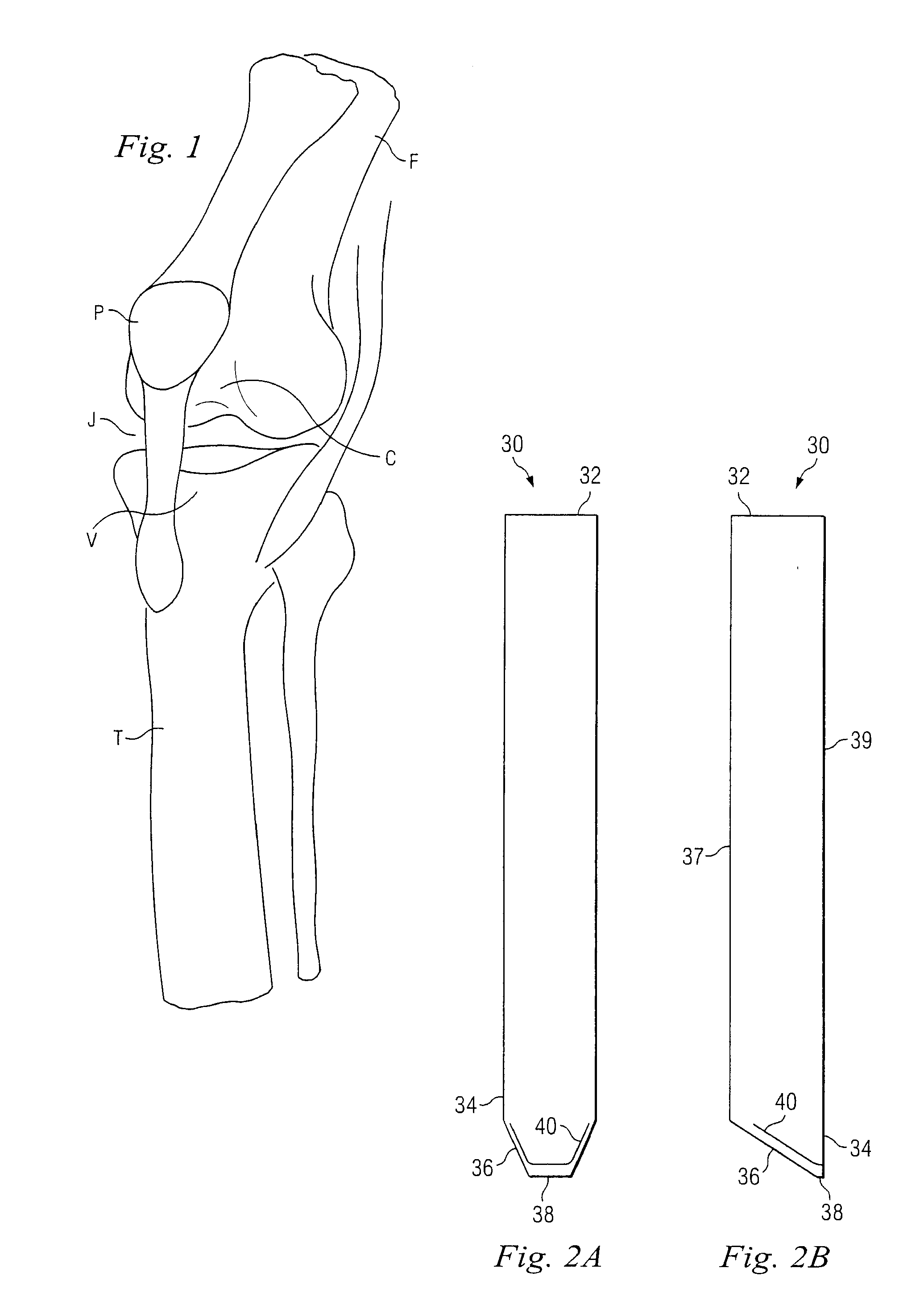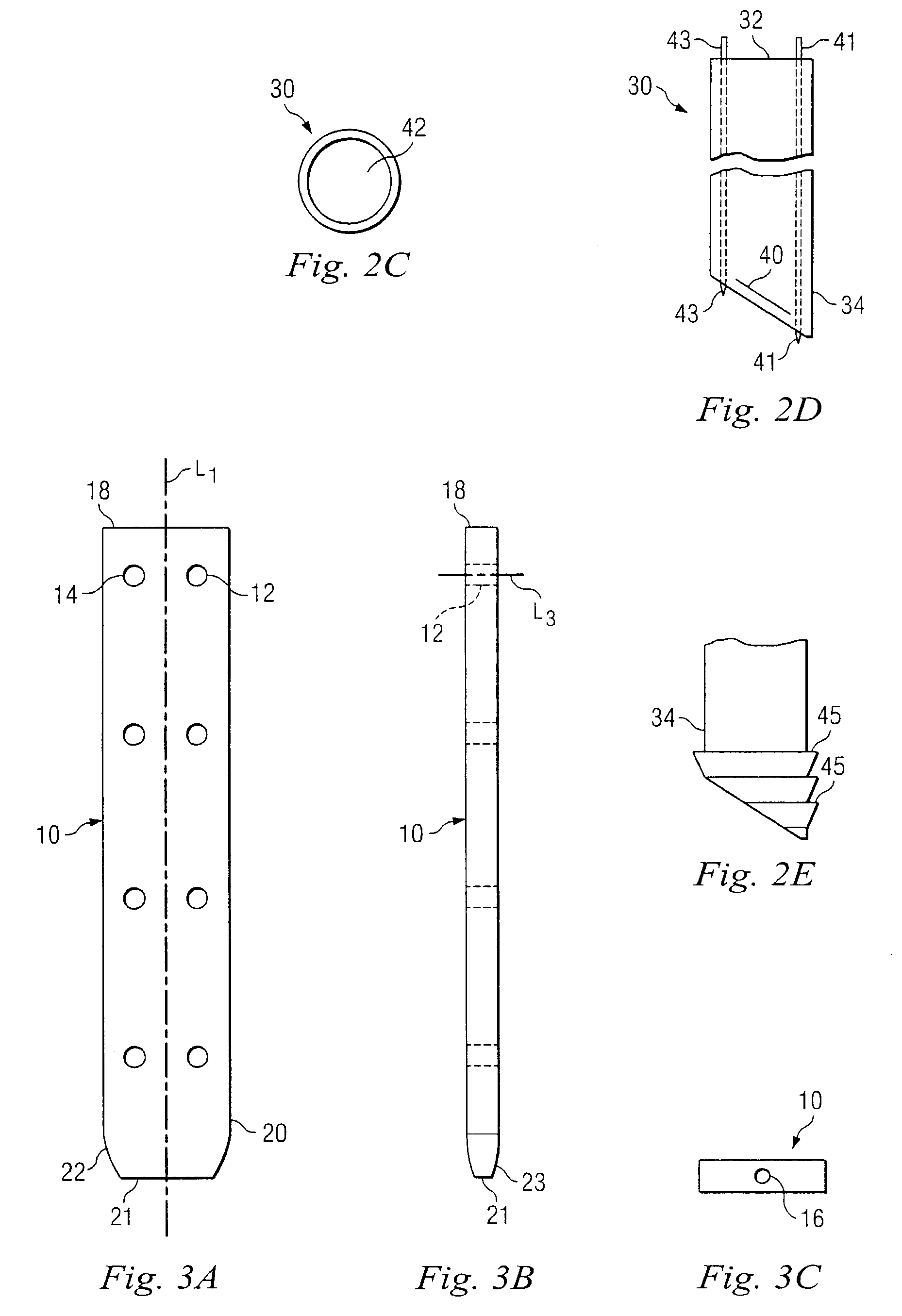Percutaneous Fixator and Method of Insertion
a technology of percutaneous fixation and insertion method, which is applied in the field of skeletal fixation, can solve the problems of trauma associated with surgical access to the proximal portion of the tibia, and achieve the effect of reducing the risk of fractur
- Summary
- Abstract
- Description
- Claims
- Application Information
AI Technical Summary
Benefits of technology
Problems solved by technology
Method used
Image
Examples
Embodiment Construction
[0018]The present invention provides improved techniques, instruments and internal fixation devices permitting percutaneous fixation within the intramedullary canal of the long bone. In a preferred aspect, the instrument technique and fixation devices may be utilized for plating of the proximal tibia. FIG. 1 illustrates a stylized human knee joint having a femur F joined to tibia T by patella P and the associated ligaments. Femur F includes a channel C through which the patella moves during flexion and extension of the knee joint. In a similar manner, tibia T includes a implantation site V at its proximal most portion. It would be understood, that the joint J normally includes cartilage to prevent or limit the contact between femur F and tibia T.
[0019]Referring now to FIGS. 2A through 2C, there is shown a protective sheath in accordance with one aspect of the present invention. Sheath 30 includes a proximal end 32 and an opposite distal end 34. Distal end 34 includes an extreme dist...
PUM
 Login to View More
Login to View More Abstract
Description
Claims
Application Information
 Login to View More
Login to View More - R&D
- Intellectual Property
- Life Sciences
- Materials
- Tech Scout
- Unparalleled Data Quality
- Higher Quality Content
- 60% Fewer Hallucinations
Browse by: Latest US Patents, China's latest patents, Technical Efficacy Thesaurus, Application Domain, Technology Topic, Popular Technical Reports.
© 2025 PatSnap. All rights reserved.Legal|Privacy policy|Modern Slavery Act Transparency Statement|Sitemap|About US| Contact US: help@patsnap.com



